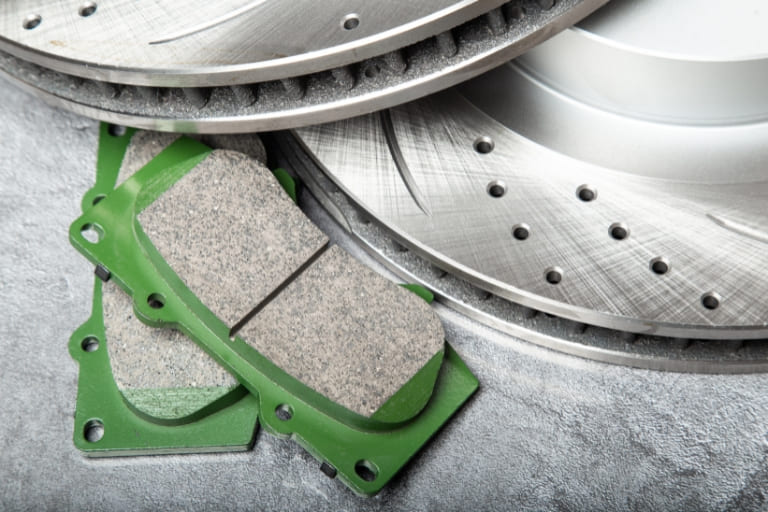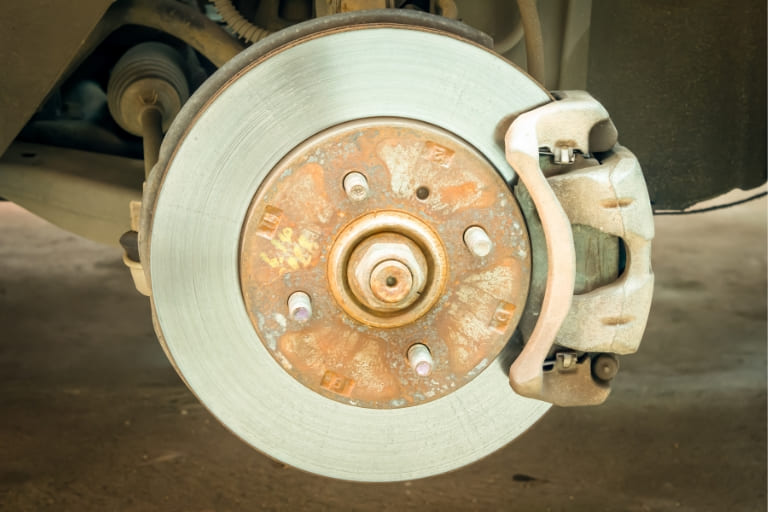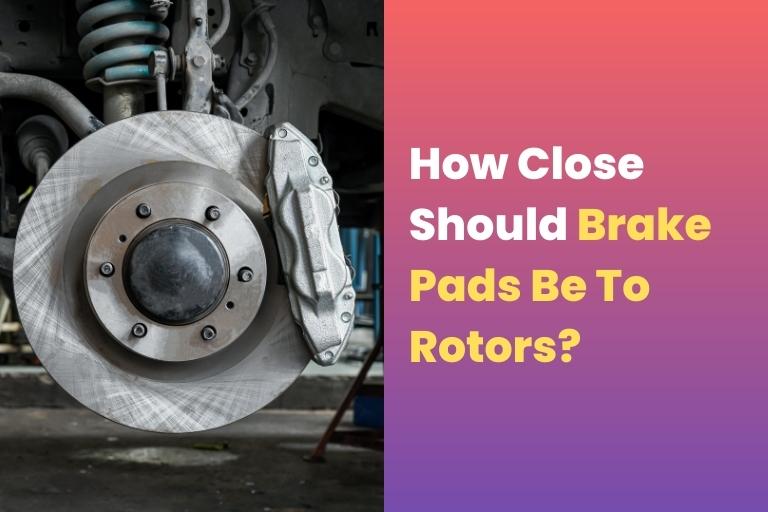Have you ever experienced a strange grinding feeling when braking in your car? You may have observed that your car takes longer to come to a complete stop than it used to. If this is the case, the space between your brake pads and rotors is too much.
Brake pads and rotors are essential parts of your vehicle’s braking system, and they work together to slow and stop your vehicle. But, if the spacing between them is too much, it can create several issues, ranging from decreased braking performance to excessive wear and tear on your brake pads.
In this article, we’ll look at the significance of the gap between brake pads and rotors and why keeping them correctly aligned is critical. We’ll also review some frequent indicators that your brake pads and rotors are too wide apart, as well as what you can do to rectify the problem.
Contents
How close should brake pads be to rotors?

Typically, the optimal gap between brake pads and rotors is between 0.5 and 1.5 mm (0.020 to 0.060 inches). This may vary depending on the make and type of your car. For precise instructions, see your owner’s handbook or a skilled mechanic.
Optimal Distance between Brake Pads and Rotors
The ideal spacing between brake pads and rotors varies based on your vehicle’s make and model. Brake pads should be placed near the rotors so that when the brakes are applied, they can make contact and deliver adequate stopping power. While the brakes are not used, there should be a tiny space between the brake pads and the rotors to prevent continual contact and excessive wear.
It is erroneous to assert that there should be no space between the disc brake rotor and the inner stationary disc pad or that there should be twice as much space between the rotor and the outer moving disc pad. These distances may differ based on the design of your vehicle’s braking system.
Common Issues with Brake Pad and Rotor Positioning

Brake pads rubbing against rotors
Brake pads rubbing on the rotors is a typical problem with brake pads and rotor placement. This might cause excessive brake pads and rotors wear and decreased braking performance.
Here’s a step-by-step solution for resolving this problem:
- Examine the brake pads and rotors to identify the source of the rubbing. Worn or broken brake pads, distorted rotors, or incorrectly placed components are examples of this.
- Spin your wheel and loosen only one bolt at a time while it’s rotating.
- Push the caliper in the direction of the rubbing using a hard thin instrument to produce a substantial gap between both sides of the rotor.
Bad caliper alignment
Another specific area for improvement with the brake pad and rotor setting is incorrect caliper alignment. As a result, the brake pads may scrape against the rotors, resulting in excessive wear and decreased braking performance.
Fixing a bad alignment noise problem usually entails addressing the source of the noise. Here are some common ways to fix bad alignment noise issues in cars:
- Go for an alignment checked.
- If the alignment is off, it can cause a variety of noises and handling issues.
- It is also recommended to have an alignment check and adjustment for your car which can help fix the problem.
Premature wear of brake parts
Another prevalent concern with brake pads and rotor placement is premature wear of brake components. Many causes can contribute to this, including faulty installation, bad driving habits, and exposure to extreme climatic conditions.
Here’s a step-by-step solution for resolving this problem:
- Inspect the brake pads and rotors to discover the reason for the premature wear. Worn or broken brake pads, distorted rotors, or incorrectly placed components are examples of this.
- Acquire any replacement components that are required.
- Replace all worn or broken components if it is required..
- Ascertain that all components are correctly placed and aligned.
- Take precautions to avoid future premature wear. Adjusting your driving habits, avoiding extreme environmental conditions, and having your brakes tested and adjusted regularly are all things you can do.
You May Also Like:
- Wheel Won’t Spin After a Brake Change?
- Does the Emergency Brake Lock All Wheels?
- Are Brake Pads Interchangeable?
- Brake Shuddering After New Rotors and Pads
- Can You Use Front Brake Pads on The Rear?
- Why Does My Car Shake After Changing the Brake Pads?
- How to Install Anti-Rattle Clips on Brake Pads
- How Long Do Brake Pads Last
- Driving Without Brake Pads: How Long is Safe?
- Brake Pad Lifespan Explained
- How to Fix New Ceramic Brake Pads Making Grinding Noise
- Ceramic vs. Semi-Metallic Brake Pads: Which is Better?
- Why Are My Brakes Grinding After New Pads And Rotors
- Ceramic vs OEM brake pads
- Ceramic vs Organic Brake Pads
- Ceramic vs Carbon Fiber Brake Pads
Conclusion
In conclusion, appropriate brake pads and rotor placement are critical for maximum braking performance and vehicle safety. The appropriate distance between brake pads and rotors is normally between 0.5 and 1.5 mm (0.020 to 0.060 inches), and the brake pads must be securely positioned against the rotors with no room in between.
The space between the inside stationary disc pad and the disc brake rotor should be the same as between the rotor and the outside moving disc pad for equal wear and effective braking.
For particular suggestions for your make and model of car, always check your owner’s handbook or a professional technician. You may assist in protecting the safety and dependability of your vehicle by keeping proper brake pads and rotor placement.
